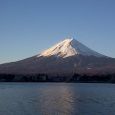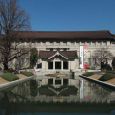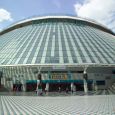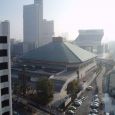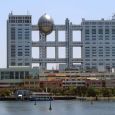Tokyo
Advertisement
By Air
Haneda Airport offers domestic and international flights.Outside Tokyo, Narita International Airport, in Chiba Prefecture, is the major gateway for international travelers to Japan and Japan's flag carrier Japan Airlines, All Nippon Airways, Delta Air Lines, and United Airlines all have a hub at this airport.
By Train
There is a frequent intercity Shinkansen service to and from Tokyo Station (Tokyo-eki) in Chiyoda, from where you can easily connect pretty much anywhere in the city on the JR Yamanote or Metro Marunouchi lines.For all northbound trains, you can also hop on at Ueno, while all westbound trains stop at Shinagawa.For non-Shinkansen services, Shibuya and Shinjuku stations offer local connections to the west.Ueno and Ikebukuro stations connect you to the northern suburbs and neighboring prefectures.
By Bus
Highway bus services link Tokyo to other cities, resort areas and the surrounding prefectures.There are JR and private bus companies. Bus service may be cheaper, but the train is probably more convenient.If you have a JR pass, then you should generally stick with the trains.Long-distance buses use a number of terminals scattered throughout the city, but the main JR depot is at Tokyo Station's Yaesu-minamiguchi exit, while Keio and some other private companies use the Shinjuku Highway Bus Terminal,opposite Yodobashi Camera near the West Exit.
By Ferries
The main long-distance ferry terminal is Ariake Ferry Terminal,located on an artificial island adjacent to Odaiba in Tokyo Bay. The nearest station is Kokusai-Tenjijo-Seimon on the Yurikamome line, but it's still a bit of a hike. You can also take a direct bus from Shin-Kiba station on the Metro Yurakucho line.
Advertisement
Tokyo National Museum
Is the oldest and largest museum in Japan.The museum collects, houses, and preserves a comprehensive collection of art works and archaeological objects of Asia, focusing on Japan.The museum holds over 110,000 objects, which includes 87 Japanese National Treasure holdings and 610 Important Cultural Property holdings (as of July, 2005).The museum also conducts research and organizes educational events related to its collection.The museum is located inside Ueno Park in Taito, Tokyo.There are restaurants and shops within the museum's premises, as well as outdoor exhibitions and a garden where visitors can enjoy seasonal views.The museum's collections focus on ancient Japanese art and Asian art along the Silk Road. There is also a large collection of Greco-Buddhist art.
Mount Fuji
Is the highest mountain in Japan at 12,389 ft.An active stratovolcano that last erupted in 1707–08, Mount Fuji lies about 100 kilometres (60 miles) south-west of Tokyo, and can be seen from there on a clear day.Mount Fuji's exceptionally symmetrical cone is a well-known symbol of Japan and it is frequently depicted in art and photographs,as well as visited by sightseers and climbers.It is one of Japan's "Three Holy Mountains" (Sanreizan) along with Mount Tate and Mount Haku.
Tokyo Imperial Palace
Is the main residence of the Emperor of Japan.It is a large park-like area located in the Chiyoda area of Tokyo close to Tokyo Station and contains several buildings including the main palace (Kyuden), the private residences of the imperial family, an archive, museum and administrative offices.It is built on the site of the old Edo castle.The total area including the gardens is 7.41 square kilometres (2.86 sq mi).The present Imperial Palace encompasses the retrenchments of the former Edo Castle.The modern palace Kyuden for various imperial court functions is located in the old Nishinomaru,while the residence of the emperor and empress is located in the Fukiage Gardens.
Ryogoku Kokugikan
Also known as Sumo Hall, is an indoor sporting arena located in the Ryogoku neighborhood of Sumida, one of the 23 wards of Tokyo in Japan, next to the Edo-Tokyo Museum.It is the third building built in Tokyo associated with the name kokugikan.The current building was opened in 1985 and has a capacity of 13,000 people.It is mainly used for sumo wrestling tournaments (honbasho) and hosts the hatsu (new year) basho in January, the natsu (summer) basho in May, and the aki (autumn) basho in September.It also houses a museum about sumo.The venue is also used for other indoor events, such as boxing, pro wrestling, and music concerts.In past years, it has hosted the G-1 Climax, an annual tournament in New Japan Pro Wrestling.
Tokyo Dome
Is a 42,000-seat stadium located in Bunkyo Ward of Tokyo, Japan.The stadium opened for business on March 17, 1988.It was built on the site of the Velodrome which was next door to the site of the predecessor ballpark, Korakuen Stadium. Like Korakuen, the Dome hosts the Toei Superheroes live shows of the year.Tokyo Dome's original nickname was "The Big Egg", with some calling it the "Tokyo Big Egg".Its dome-shaped roof is an air-supported structure,a flexible membrane held up by slightly pressurizing the inside of the stadium.
Information not available
Information not available
Advertisement

